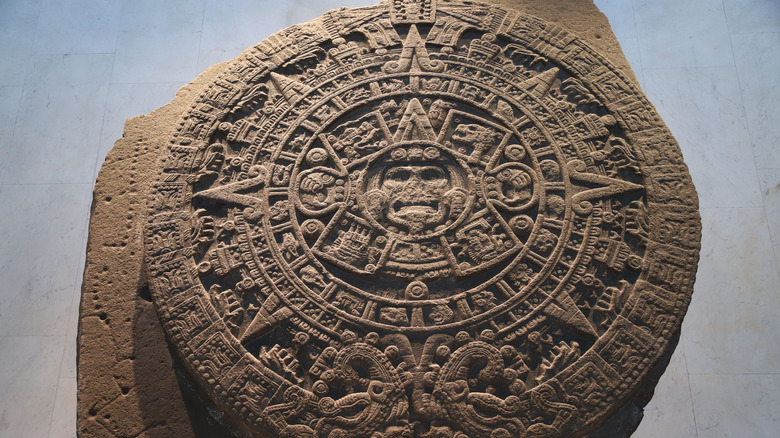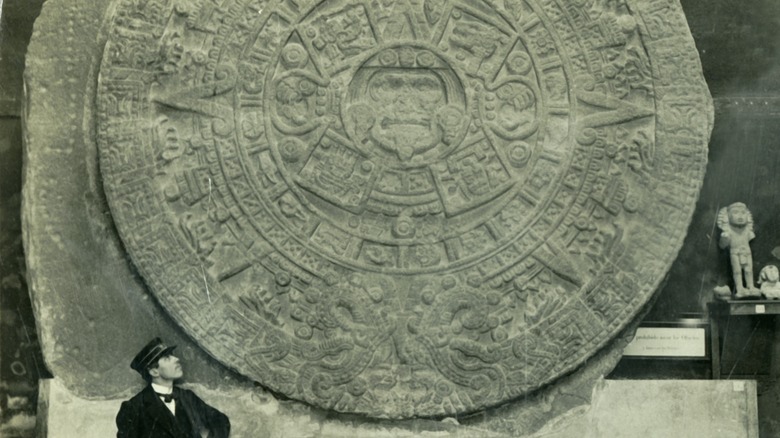This Is What Happened To The Aztec Sun Stone After The Spanish Conquest
The Aztec Sun Stone is one of the most remarkable surviving artifacts from the Aztec Empire, the civilization that dominated Mesoamerica during the arrival of Spanish conquistadors. Intricately carved, menacingly beautiful, and standing a mighty 12 feet tall, scholars have debated for centuries over the stone's purpose without ever reaching a completely satisfactory answer. However, initial theories that it functioned as a calendar have been overlooked, with the general consensus being the stone was a sort of religious tribute.
The Sun Stone, which was vibrantly painted back in the 16th century, was placed proudly in the vast capital city of Tenochtitlan, located in modern-day Mexico City, until the arrival of the Spaniards, per Thoughtco. After the Spanish conquered the Mexican people, they focused on suppressing the complex local religion. This meant the Sun Stone, which could have played a part in human sacrifice rituals, had to be abandoned, and was lost to time for centuries.
The Spanish buried the Sun Stone
The Sun Stone was situated horizontally in the ceremonial precinct of Tenochtitlan, likely near the area where they conducted rituals — it's even possible the stone played a part in those sacrifices (via ThoughtCo). The Spanish had the Sun Stone moved a few hundred meters out of the ceremonial precinct, no mean feat given it clocks in at around 25 tons (via World History Encyclopedia). At some point toward the late 16th century, Spanish officials and clergymen in the city decided the stone was a bad look for their new settlement on the ruins of Tenochtitlan, and the order was given to bury the amazingly detailed carving.
The stone was buried, face down, in an undisclosed location within Tenochtitlan, where it lay for over 200 years. It was rediscovered in 1790 by construction workers repaving the main plaza of what was now Mexico City. Over the course of its centuries of neglect, the stone became weathered and lost its vibrant paint, yet still retains much of its detail and intricacy. It's strange to think that such a massive, impressive work of art can go missing and forgotten for so long, and one can only wonder what discoveries are still to be had.

